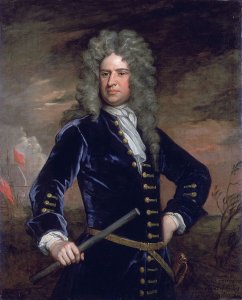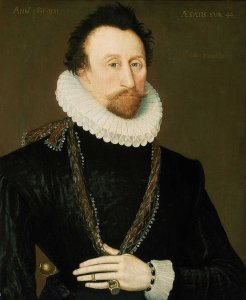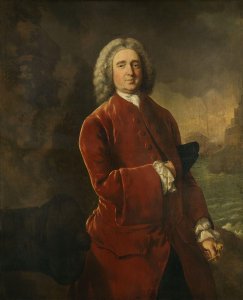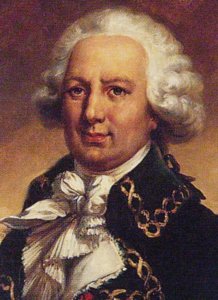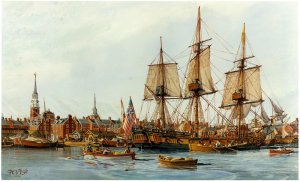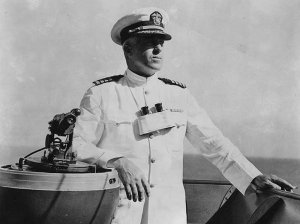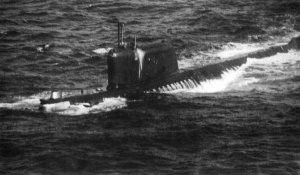Today in Naval History - Naval / Maritime Events in History
1st of November
please use the following link and you will find the details and all events of this day ..... in the following you will find some of the events
1794 – Launch of French Régénérée, a 40-gun Cocarde-class frigate
Régénérée was a 40-gun Cocarde-class frigate of the French Navy. The British captured her in 1801 at the fall of Alexandria, named her HMS Alexandria, sailed her back to Britain, but never commissioned her. She was broken up in 1804.

Engagement between His Majesty's Ship Brilliant... & the L' Vertue & Regenue French Frigates... off Santa Cruz, on the Coast of Barbary, the 26th of July 1798 (PAG7116)
Remark Uwe: In british NMM the ship is named "Regenue"
1809 - Boats of HMS Tigre (1793 - 80), HMS Cumberland (1808 - 74), HMS Volontaire (1796 - 40), HMS Apollo (1805 - 38), HMS Topaze (1793 - 38), HMS Philomel (18), HMS Scout (1804 - 18) and HMS Tuscan (1808 - 16) captured or destroyed all the vessels of a convoy in Rosas Bay.
Between 30 October and 1 November 1809 Admiral Benjamin Hallowell's squadron was at the Bay of Rosas. On 30 October, boats from Tigre joined with boats from Tuscan, Cumberland, Volontaire, Apollo, Topaz, Philomel, and Scout in a cutting out attack after a squadron off the south of France chased an enemy convoy into the Bay of Rosas. The convoy had lost its escorting ships of the line, Robuste and Lion, near Frontignan, where the squadron under Rear Admiral George Martin, of Collingwood's fleet, had burnt them, but were nevertheless heavily protected by an armed storeship of 18 guns, two bombards and a xebec. Some of the British boats took heavy casualties in the clash, but Tuscan had only one officer slightly wounded, and one seaman dangerously wounded. By the following morning the British had accounted for all eleven vessels in the bay, burning those they did not bring out. In January 1813 prize money was awarded to the British vessels that took part in the action for the capture of the ships of war Gromlire and Normande, and of the transports Dragon and Indien. A court declared Invincible a joint captor. Head money was also paid for the Grondire and Normande and for the destruction of Lemproye and Victoire. In 1847 the Admiralty awarded the Naval General Service Medal with clasp "1 Nov. Boat Service 1809" to all surviving claimants from the action.

Scale: 1:48. Plan showing the body plan with stern board outline, sheer lines with inboard detail, and longitudinal half-breadth for 'Tigre' (1795), a captured French Third Rate, as taken off at Portsmouth Dockyard prior to being fitted as 74-gun Third Rate, two-decker.
1864 - CSS Chickamauga, commanded by Lt. John Wilkinson, captures schooners Goodspeed and Otter Rock off the northeast coast of the United States.
CSS Chickamauga, originally the blockade runner Edith, was purchased by the Confederate States Navy at Wilmington, North Carolina in September 1864. In September, when she was nearly ready for sea, the Confederate Army sought unsuccessfully to retain her at that place for use as a troop and supply transport. On October 28, 1864, she put to sea under Lieutenant John Wilkinson (CSN) for a cruise north to the entrance of Long Island Sound, thence to St. George, Bermuda, for repairs and coal. She took several prizes before returning to Wilmington on November 19.

1914 – World War I: The first British Royal Navy defeat of the war with Germany, the Battle of Coronel, is fought off of the western coast of Chile, in the Pacific, with the loss of HMS Good Hope and HMS Monmouth
The Battle of Coronel was a First World War Imperial German Naval victory over the Royal Navy on 1 November 1914, off the coast of central Chile near the city of Coronel. The East Asia Squadron (Ostasiengeschwader or Kreuzergeschwader) of the Kaiserliche Marine (Imperial German Navy) led by Vice-Admiral Graf Maximilian von Spee met and defeated a British squadron commanded by Rear-Admiral Sir Christopher Cradock.

The German squadron leaving Valparaiso on 3 November 1914 after the battle, SMS Scharnhorst and Gneisenau in the lead, and SMS Nürnberg following. In the middle distance are the Chilean cruisers Esmeralda, O'Higgins and Blanco Encalada, and the battleship Capitán Prat.

SMS Scharnhorst
1918 – SMS Viribus Unitis was sunk by a limpet mine planted by Raffaele Rossetti, an Italian engineer and military naval officer of the Regia Marina
SMS Viribus Unitis was an Austro-Hungarian dreadnought battleship, the first of the Tegetthoff class. "Viribus Unitis", meaning "With United Forces", was the personal motto of Emperor Franz Joseph I.

Battleship SMS Viribus Unitis of the Austro-Hungarian Navy

Model of Viribus Unitis in the Museum of Military History, Vienna
1920 – American fishing schooner Esperanto defeats the Canadian fishing schooner Delawana in the First International Fishing Schooner Championship Races in Halifax, Nova Scotia.
International Fishing Vessel Championship, 1920
Under command of Captain Martin Leander Welch, Esperanto became the first winner of the International Fishing Vessel Championship on November 1, 1920, when she beat the Canadian fishing schooner Delawana of Riverportunder command of Capt. Thomas Himmelman. In the next race, in 1921, the Canadian sailing ship Bluenose won against the schooner Elsie from Gloucester, Massachusetts.

1940 – Launch of japanese battleship Musashi
Musashi (武蔵), named after the former Japanese province, was one of two Yamato-class battleships built for the Imperial Japanese Navy (IJN), beginning in the late 1930s. The Yamato-class ships were the heaviest and most powerfully armed battleships ever constructed, displacing almost 72,000 long tons (73,000 t) fully loaded and armed with nine 46-centimetre (18.1 in) main guns. Their secondary armament consisted of four 15.5-centimetre (6.1 in) triple-gun turrets formerly used by the Mogami-class cruisers. They were equipped with six or seven floatplanes to conduct reconnaissance.

1st of November
please use the following link and you will find the details and all events of this day ..... in the following you will find some of the events
Naval/Maritime History - 27th of August - Today in Naval History - Naval / Maritime Events in History
Today in Naval History - Naval / Maritime Events in History Other Events on 31 October 1641 – Death of Cornelis Jol, Dutch admiral (b. 1597) Cornelis Corneliszoon Jol (1597 – 31 October 1641), nicknamed Houtebeen ("pegleg"), was a 17th-century Dutch corsair and admiral in the Dutch West...
shipsofscale.com
1794 – Launch of French Régénérée, a 40-gun Cocarde-class frigate
Régénérée was a 40-gun Cocarde-class frigate of the French Navy. The British captured her in 1801 at the fall of Alexandria, named her HMS Alexandria, sailed her back to Britain, but never commissioned her. She was broken up in 1804.
Engagement between His Majesty's Ship Brilliant... & the L' Vertue & Regenue French Frigates... off Santa Cruz, on the Coast of Barbary, the 26th of July 1798 (PAG7116)
Remark Uwe: In british NMM the ship is named "Regenue"
1809 - Boats of HMS Tigre (1793 - 80), HMS Cumberland (1808 - 74), HMS Volontaire (1796 - 40), HMS Apollo (1805 - 38), HMS Topaze (1793 - 38), HMS Philomel (18), HMS Scout (1804 - 18) and HMS Tuscan (1808 - 16) captured or destroyed all the vessels of a convoy in Rosas Bay.
Between 30 October and 1 November 1809 Admiral Benjamin Hallowell's squadron was at the Bay of Rosas. On 30 October, boats from Tigre joined with boats from Tuscan, Cumberland, Volontaire, Apollo, Topaz, Philomel, and Scout in a cutting out attack after a squadron off the south of France chased an enemy convoy into the Bay of Rosas. The convoy had lost its escorting ships of the line, Robuste and Lion, near Frontignan, where the squadron under Rear Admiral George Martin, of Collingwood's fleet, had burnt them, but were nevertheless heavily protected by an armed storeship of 18 guns, two bombards and a xebec. Some of the British boats took heavy casualties in the clash, but Tuscan had only one officer slightly wounded, and one seaman dangerously wounded. By the following morning the British had accounted for all eleven vessels in the bay, burning those they did not bring out. In January 1813 prize money was awarded to the British vessels that took part in the action for the capture of the ships of war Gromlire and Normande, and of the transports Dragon and Indien. A court declared Invincible a joint captor. Head money was also paid for the Grondire and Normande and for the destruction of Lemproye and Victoire. In 1847 the Admiralty awarded the Naval General Service Medal with clasp "1 Nov. Boat Service 1809" to all surviving claimants from the action.
Scale: 1:48. Plan showing the body plan with stern board outline, sheer lines with inboard detail, and longitudinal half-breadth for 'Tigre' (1795), a captured French Third Rate, as taken off at Portsmouth Dockyard prior to being fitted as 74-gun Third Rate, two-decker.
1864 - CSS Chickamauga, commanded by Lt. John Wilkinson, captures schooners Goodspeed and Otter Rock off the northeast coast of the United States.
CSS Chickamauga, originally the blockade runner Edith, was purchased by the Confederate States Navy at Wilmington, North Carolina in September 1864. In September, when she was nearly ready for sea, the Confederate Army sought unsuccessfully to retain her at that place for use as a troop and supply transport. On October 28, 1864, she put to sea under Lieutenant John Wilkinson (CSN) for a cruise north to the entrance of Long Island Sound, thence to St. George, Bermuda, for repairs and coal. She took several prizes before returning to Wilmington on November 19.
1914 – World War I: The first British Royal Navy defeat of the war with Germany, the Battle of Coronel, is fought off of the western coast of Chile, in the Pacific, with the loss of HMS Good Hope and HMS Monmouth
The Battle of Coronel was a First World War Imperial German Naval victory over the Royal Navy on 1 November 1914, off the coast of central Chile near the city of Coronel. The East Asia Squadron (Ostasiengeschwader or Kreuzergeschwader) of the Kaiserliche Marine (Imperial German Navy) led by Vice-Admiral Graf Maximilian von Spee met and defeated a British squadron commanded by Rear-Admiral Sir Christopher Cradock.
The German squadron leaving Valparaiso on 3 November 1914 after the battle, SMS Scharnhorst and Gneisenau in the lead, and SMS Nürnberg following. In the middle distance are the Chilean cruisers Esmeralda, O'Higgins and Blanco Encalada, and the battleship Capitán Prat.
SMS Scharnhorst
1918 – SMS Viribus Unitis was sunk by a limpet mine planted by Raffaele Rossetti, an Italian engineer and military naval officer of the Regia Marina
SMS Viribus Unitis was an Austro-Hungarian dreadnought battleship, the first of the Tegetthoff class. "Viribus Unitis", meaning "With United Forces", was the personal motto of Emperor Franz Joseph I.
Battleship SMS Viribus Unitis of the Austro-Hungarian Navy
Model of Viribus Unitis in the Museum of Military History, Vienna
1920 – American fishing schooner Esperanto defeats the Canadian fishing schooner Delawana in the First International Fishing Schooner Championship Races in Halifax, Nova Scotia.
International Fishing Vessel Championship, 1920
Under command of Captain Martin Leander Welch, Esperanto became the first winner of the International Fishing Vessel Championship on November 1, 1920, when she beat the Canadian fishing schooner Delawana of Riverportunder command of Capt. Thomas Himmelman. In the next race, in 1921, the Canadian sailing ship Bluenose won against the schooner Elsie from Gloucester, Massachusetts.
1940 – Launch of japanese battleship Musashi
Musashi (武蔵), named after the former Japanese province, was one of two Yamato-class battleships built for the Imperial Japanese Navy (IJN), beginning in the late 1930s. The Yamato-class ships were the heaviest and most powerfully armed battleships ever constructed, displacing almost 72,000 long tons (73,000 t) fully loaded and armed with nine 46-centimetre (18.1 in) main guns. Their secondary armament consisted of four 15.5-centimetre (6.1 in) triple-gun turrets formerly used by the Mogami-class cruisers. They were equipped with six or seven floatplanes to conduct reconnaissance.



 of the freighter Cabo Machichaco, at the port of Santander, Cantabria, Spain, with over 2000 injured. 590 death
of the freighter Cabo Machichaco, at the port of Santander, Cantabria, Spain, with over 2000 injured. 590 death
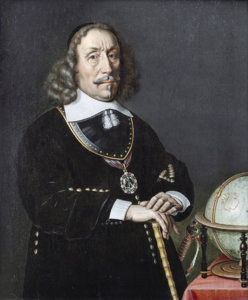
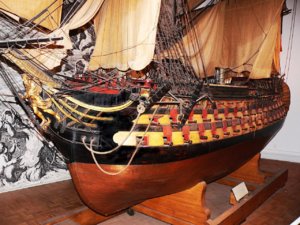
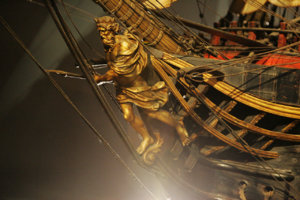

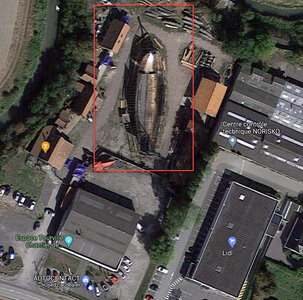
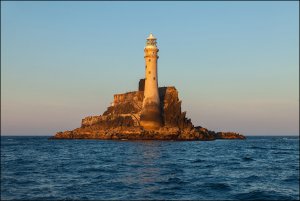
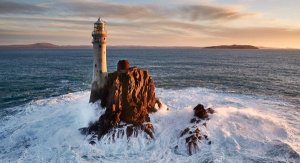
 week
week